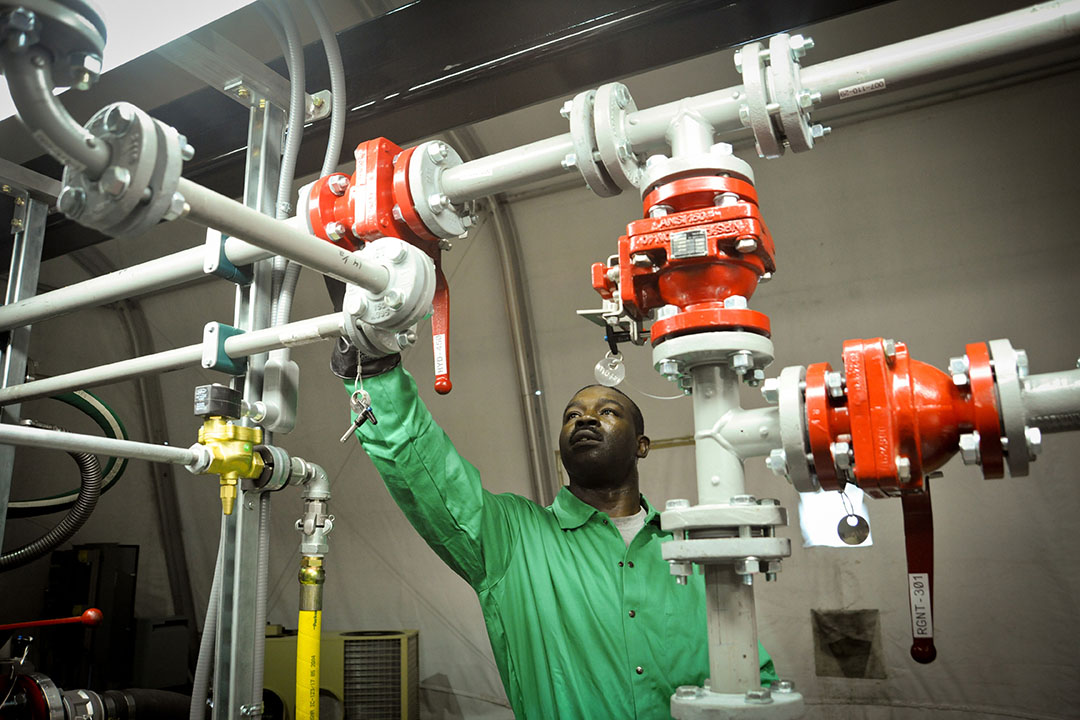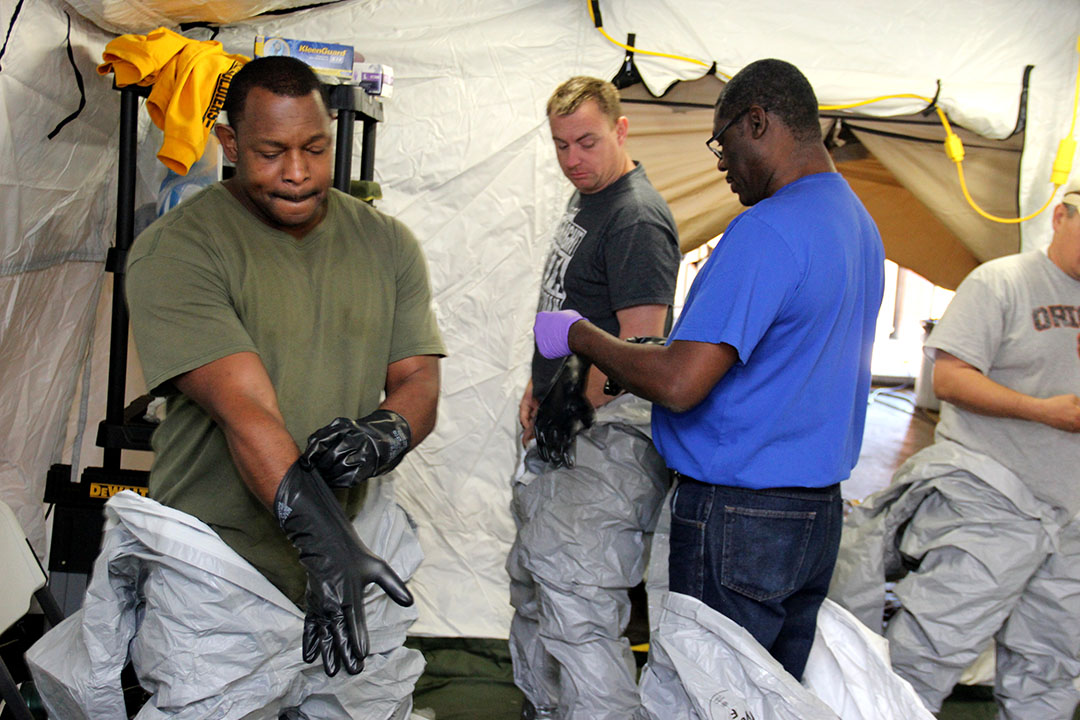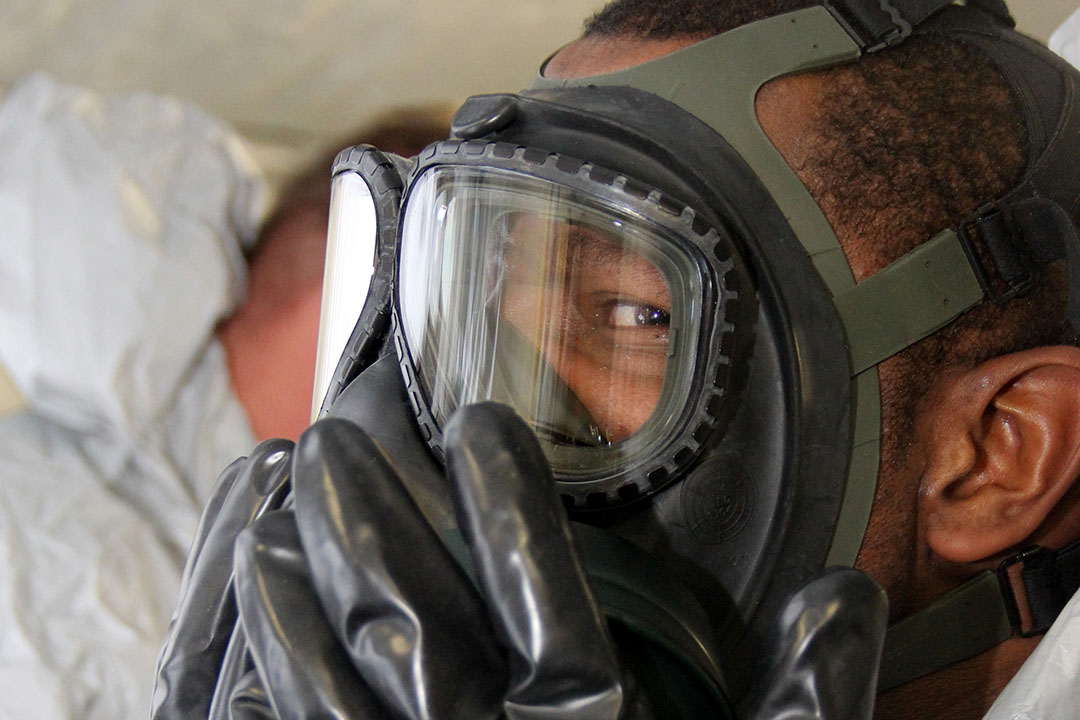// NEWS RELEASE
Business Model Reduces Army Cost to Maintain Capabilities
CBARR experts relieve potential burden on Warfighters, commanders
CCDC Chemical Biological Center Public Affairs | August 30th, 2017
Business Model Reduces Army Cost to Maintain Capabilities
CBARR experts relieve potential burden on Warfighters, commanders
DEVCOM CBC Public AffairsAugust 30th, 2017

The Syrian mission to destroy declared chemical warfare material is an example of how CBARR’s expertise is able to fulfill critical mission needs immediately and effectively.
Fielding systems for the destruction of chemical and biological warfare materials is a complex and costly endeavor. The requirements for destroying these materials are specific to the material of concern and its configuration, so each destruction solution is unique. But when the system is needed, it’s often needed urgently.
Take, for example, the Field Deployable Hydrolysis System (FDHS), which was designed as a result of an urgent strategic requirement for a mobile system to destroy bulk Syrian chemical agent and precursor material. The Army may, or may not, need to operate it again under similar conditions. CBARR is responsible for ensuring that the manpower is in place and trained to operate and maintain the FDHS and other systems to meet the Army’s readiness needs, while minimizing the financial burden on the Army.
CBARR accomplishes this goal by maintaining a portfolio of customers such as the U.S. Army Corps of Engineers, U.S. Army Chemical Materials Activity, State Department, Environmental Protection Agency, and other domestic agencies and international organizations. CBARR performs chemical demilitarization and training for these customers and receives direct payment for the work performed. These projects are occasionally developed as partnerships through Cooperative Research and Development Agreements.
Also called reimbursable work, these projects fund the personnel, training, equipment and other resources that CBARR maintains so that they can provide those capabilities to the Army when needed, reducing the cost burden to the Army and the Department of Defense.
“The benefit of doing reimbursable work is that it can pay high dividends to the Army during peacetime,” said CBARR Strategic Planner Ricardo Soto. “We man, train, equip and maintain. It only costs the Army when we’re deployed on a mission.”

A retired sergeant major, Soto is tasked with studying how CBARR can best support military operations. He served 27 years in the Army and has worked in the weapons of mass destruction arena for 26 years. “Our job is to show that we can alleviate the burden on the commander on the ground and meet strategic objectives,” Soto said of CBARR’s operations. “We can’t pull Soldiers in for two weeks, train them to do what we do, and put them back on the ground. That’s a huge burden and risk to put on a Soldier where the consequences of a decision are high.”
The Army has long recognized the value that civilian employees who are technical experts bring to the operational picture. TRADOC Pamphlet 525-7-19, 2009, U.S. Army Concept Capability Plan for CWMD for the Future Modular Force (2015-2024), addressed personnel implications by stating, “New organizational constructs will place greater reliance on experienced civilian personnel to provide the expertise needed to support CWMD training readiness and global operations.”
The Syrian mission, in which the FDHS was used to destroy 600 metric tons of chemical warfare material, is an example of the Army drawing upon the CBARR unit to fulfill a mission. “It was a requirement the Army didn’t have to go far to fill,” Soto said. “To have the Army train Soldiers in these systems would have taken a lot longer but we had the expertise and were able to reduce the time needed to field the capability.”
CBARR’s responsibility in supporting an Army mission is to provide solutions, Soto said. “You have to have a full understanding and appreciation of the system to be able to troubleshoot effectively with an operating system, for example. Sometimes that’s knowledge you can’t pass on.”
“It takes years to build proficiencies in those systems” he added. “When you come into conflict, it’s best to already have those years of experience available to you than to try to create it.”
CBARR drew on its highly skilled personnel in creating a new method of destruction to fit the unique needs of the Syrian mission. They had to determine whether to use an alternative solution like the FDHS or a traditional solution like building a destruction plant. CBARR has people experienced in plant design and trained in alternative solutions such as the FDHS, and provided a solution that enabled the Army to accomplish a crucial mission.
Under CBARR’s reimbursable business model, the customers – not the Army – pay to sustain the unit’s capabilities. “We are self-sustaining through the project work we do,” Soto said. “When the Army puts a call out, the equipment is there, the people are there and the people are trained. CBARR has the technical knowledge of the chemistry and makeup of chemical and biological warfare material, and we have the disposal, storage and monitoring expertise. That allows other resources to be used in the fight.”
“You can be capable, or have the ability, of doing a mission but not have the capability – training, equipment, personnel – to carry out the mission,” Soto said. “The uniqueness of CBARR is that we’re both. We’re capable and we have the capability with minimal reorganization.”
“We have a finite number of warfighters,” Soto concludes. “By bringing CBARR in, that leaves more of the warfighters to conduct traditional military operations and leaves us to conduct the nontraditional military operations such as [WMD] destruction. We can support both the national security and national military strategy. This frees up the Army to have its concentration in power projection. We’re taking care of the problem and the Army can maintain its resources, not drain them.”

The U.S. Army Combat Capabilities Development Command (DEVCOM) leads in the discovery, development and delivery of technology-based capabilities to enable Soldiers to win our nation’s wars and come home safely. DEVCOM is a major subordinate command of the U.S. Army Futures Command. The DEVCOM Chemical Biological Center is the Army’s principal research and development center for chemical and biological defense technology, engineering and field operations. The DEVCOM Chemical Biological Center is headquartered at Aberdeen Proving Ground, Maryland.
